The heavy snowfalls of the 2013 winter caused practically a complete halt of traffic in Moscow on a number of occasions. The past winter turned out to be long with snowfalls continuing into March.
A special rating system is used to measure the intensity of traffic jams. Congestion points are rated from 1 to 10, where 10 points means complete lack of movement.
Almost every winter, Moscow traffic jams reach 10 points.
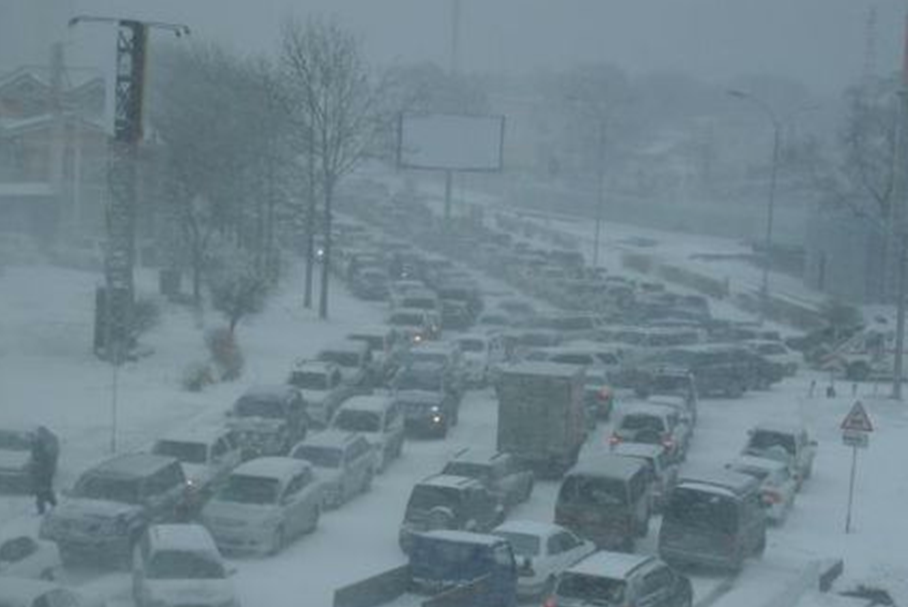
This winter traffic snarls plagued the entire city, even the Western routes which are usually congestion free.
On February 4, 2013 the overall length of slow moving traffic in Moscow extended 3.5 thousand kilometers, which is the equivalent to the distance from Russian capital to Madrid.
The longest traffic backups have been recorded on the Moscow Ring Road, extending almost to its entirety. Average speed was less than 9.7 miles per hour.
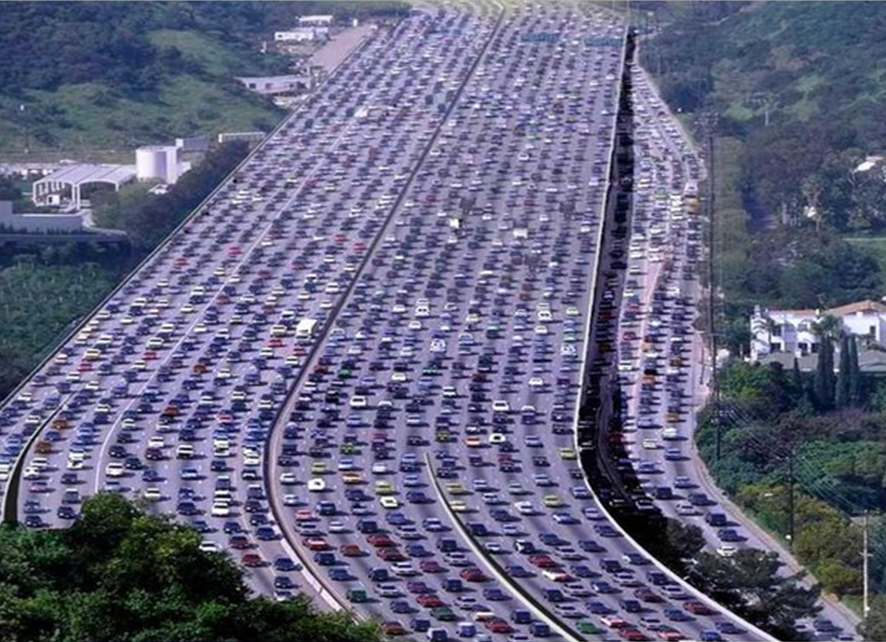
The chaos had extended beyond Moscow. According to some reports, the recent snarled traffic toward St. Petersburg stretched by as much as 120 miles. Drivers were forced to spend more than two days freezing inside their cars.
According to the research company TNS Gallup, more than 2 million people, nearly half of the capital’s car owners, use the Internet service “Yandex.Jams” to obtain information about traffic conditions.
The problem of Moscow traffic jams is not limited to winter months. Last year an average of 850 jams occurred daily, and each of them involved about 2000 cars. Typical duration of Moscow traffic tie ups is an hour and a half. Last year, the average driver lost more than 13 hours in traffic jams each month, the equivalent of one and a half working days.
The author of this article personally spent two and a half hours in a traffic jam during his visit to Moscow.
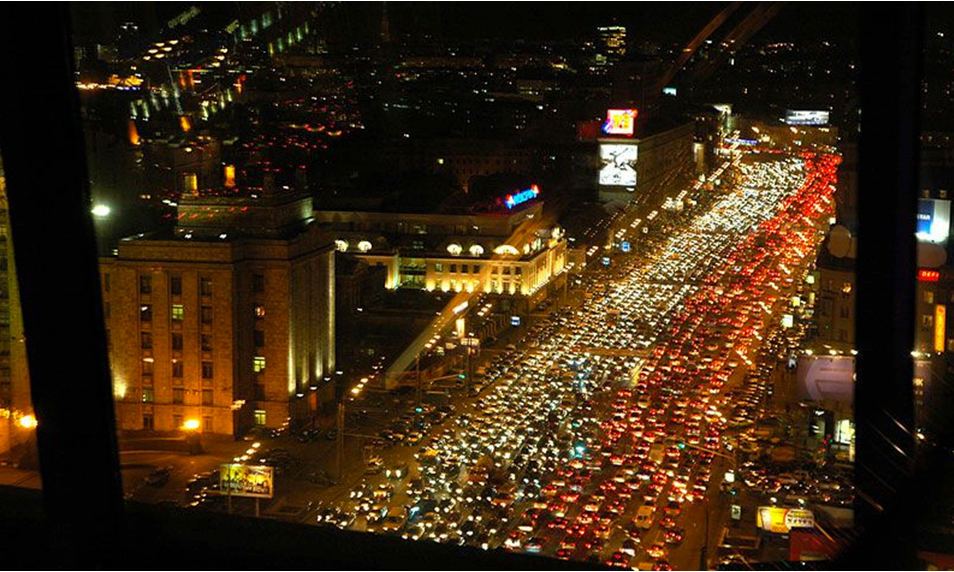
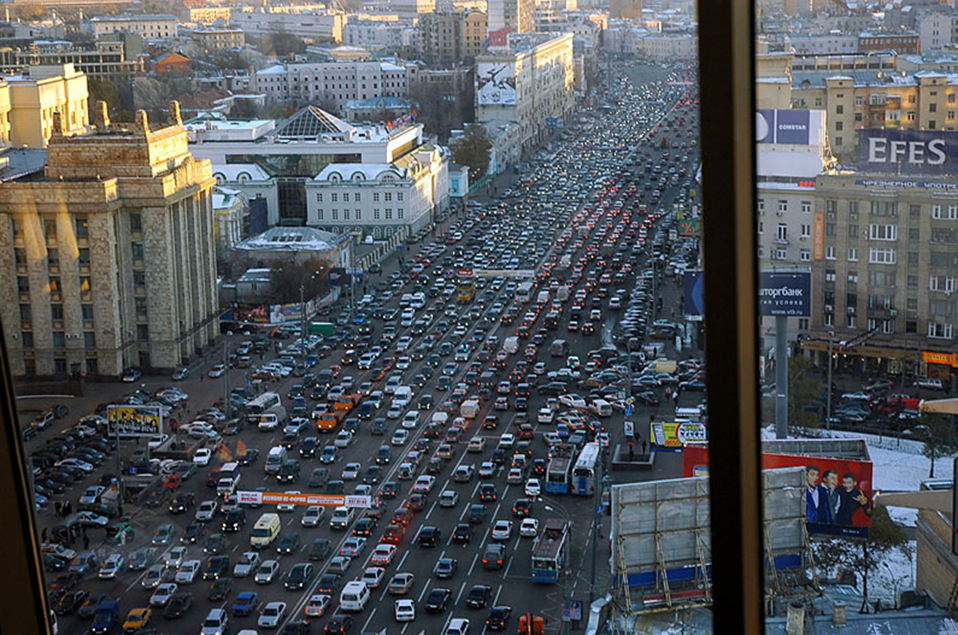
The evening speed on the roads starting at 4:00 PM, two hours before “rush hour,” is not more than ten miles per hour and some places and less than three miles per hour in some, the average walking speed.
There are now six times more cars in Moscow than there were in 1991.
Moreover, there is a lack of parking spaces in Moscow. The Head of Transportation and Communications of Moscow, Vasily Kichedzhi, recently noted that there are only 250,000 parking spaces available now in the city where 1.2 million spaces are needed. He stated that the City is not able to create suitable parking for so many cars.
Here is a CBS NEWS comment on the situation.
There is a huge subway system in Moscow. But most of the financially prosperous Muscovites consider the subway beneath their prestige. In order to understand why, look at the photo of Moscow subway at rush hour:
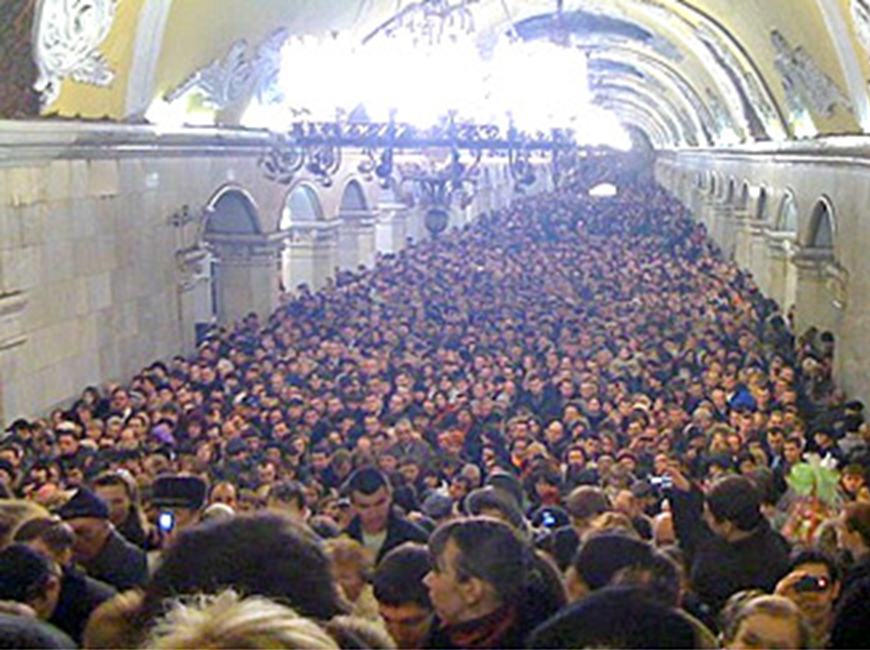
Moscow’s government is taking a lot of steps to reduce the number of traffic delays. For example, it prohibits the entry of heavy vehicles into the city and is building new roads.
Here is the translation of an official approach for solving the problem that is given in the Russian Wikipedia:
“The main methods to resolve the traffic congestion on the roads of the capital include the construction of underground roads; the development and increasing the number of lines of Moscow subway; use of air service between airports, train stations and major shopping centers; increasing a number of underground parking lots in the city center; charging fee for parking in the central part of the city”.
However, given the environment of total corruption, some wealthy Muscovites find more immediate methods to solve their problem. A Canadian newspaper National Post publication describes one amazing dodge.

